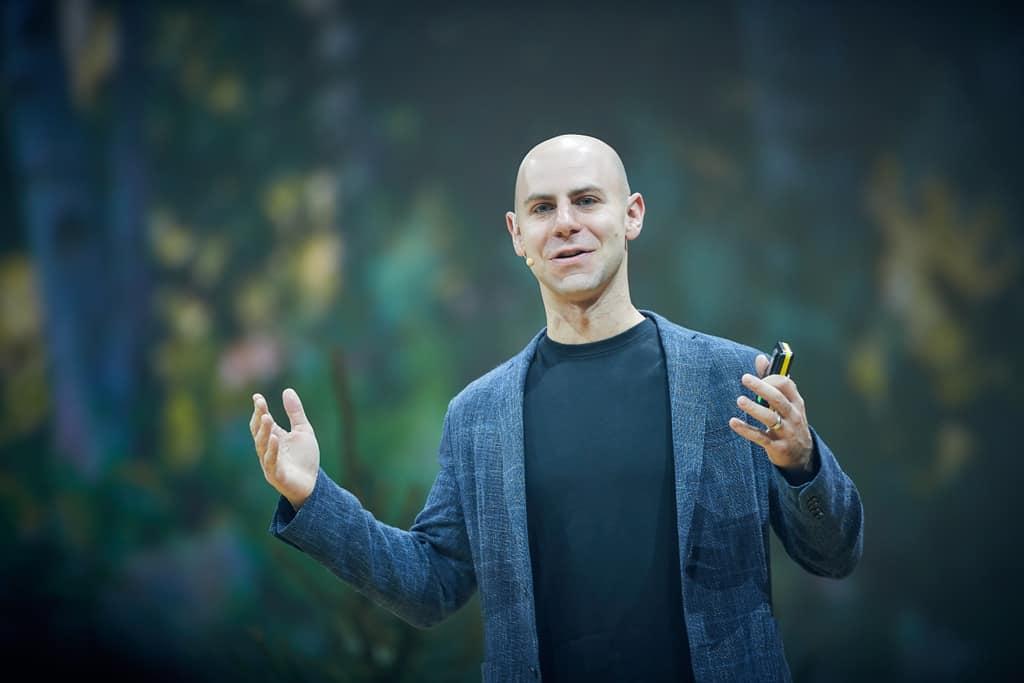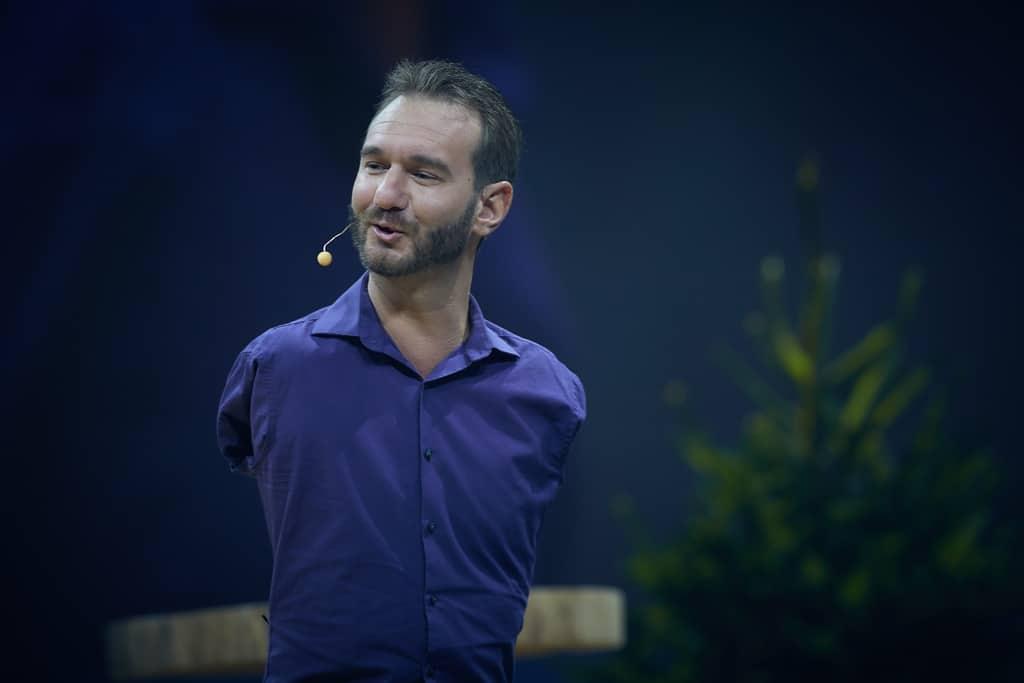4Feb2018
Professor and award-winning author Adam Grant took his audience on a trip down memory lane at Nordic Business Forum 2017. On the topic of conforming or standing out, Grant explains an interesting experience he had at his first corporate job in an advertising firm. After witnessing one of his colleagues being publicly reprimanded by a senior executive, Grant felt compelled to tell someone about it. The one person Grant knew would support him within the organization was his boss’s boss — but this did not go as planned. When he brought up the mistreatment issue, he was taken to a women’s bathroom and berated for daring to open his mouth. That was was the day Grant decided to pursue a career in academia. The experience also raised the question that he would soon revisit: why are so many people unwilling or unable to speak up, especially on behalf of new and risky ideas?
Answering this question led Grant to study what he calls “originals”. Grant explains this term to mean “the non-conformists who are comfortable taking risks, standing out, speaking up. They drive a lot of the creativity and change in organizations.”
Contrary to conventional wisdom, Grant does not think that our collective problem is a deficit of innovative ideas. Our problem is that we don’t handle them properly when they do surface. “We do not lack creative ideas in our organizations,” Grant proclaims. “What we lack are people who know how to champion them effectively.”
Next, Grant showcased a series of Nordic companies: Lego, Nokia, Spotify, IKEA, King Games, Linux, Skype, and Novo Nordisk. These companies embody the spirit of allowing people to suggest and explore new ideas. And this is just the start; Grant demands more companies start working like them. But for that to happen, Grant claims that we need to create an environment where original ideas emerge more easily and more often.
What does it take to get original ideas heard and taken seriously? As it turns out, Grant knows five tools to achieve exactly that.
1. Lead with the bad
Taking the lead from the creator of Babble.com, Grant cites a clever tactic used by Rufus Griscom. When Griscom was pitching his idea to investors, he would lead with 3 reasons why they should NOT invest in his company. It’s an odd approach to use with investors, but Grant insists that it’s actually smart marketing because it reduces availability bias.
Availability bias states that when a thought is easy to conceive, you tend to believe that it is true. However, if an idea is difficult to conceive, you tend to think it’s false — or, at least, not applicable.
Griscom’s approach effectively leverages this bias, as Grant explains:
“When he says here are the three reasons you should not invest in Babble, he makes it harder for them to come up with their own objections. And the harder they have to work to think of reasons why the company is flawed, the less flawed they think that company is.”
Typically, investors of this sort expend a significant energy showing how smart they are, which is often done by pointing out the flaws in a pitch or idea. But, when the pitch opens with its flaws, investors use that energy to show how those flaws are not only non-fatal, but fixable.
Even in places where it may seem counterintuitive to lead with weaknesses, Grant claims that it can work. He continues, “Even in job interviews, recruiters are 30% more likely, on average, to give a job offer to someone who answers the weakness question honestly.”
2. Make the unfamiliar familiar
“The more original your ideas are,” Grant says, “the harder it is for your audience to appreciate them.” To prove this point, he asks the audience to try an experiment: clap out the rhythm to a song that most people should know, and see if another person can identify it.
When he asks for a show of applause to see who was successful in the exercise, it was unsurprising that only a few people clapped. Grant used this exercise to demonstrate what happens when we pitch new ideas to others: “When you pitch a new idea to someone else, you are not only hearing the tune in your head, you’re actually the one who wrote the song.”
In fact, the available data show that it takes 10 to 20 exposures to a new idea before you start to understand it. Grant cites the original pitch Disney writers used for The Lion King: “Bambi, in Africa, with lions.” After many rewrites and re-pitches, someone eventually suggested: “Why don’t you turn this into Hamlet.” Hamlet with animals. The movie was immediately given the green light to start production.
Grant explains that what people need to do when presenting new ideas is to “build a bridge between them and something that’s worked in a different domain that people already understand.” Grant explains that this is why breadth of knowledge is perhaps more important than depth of knowledge. The broader the experience you have to draw from, the more you can build these kinds of bridges – between industries, fields, cultures, and so on.
Grant presents the example of the time he passed up an opportunity to invest in an idea pitched to him by one of his students to sell eyewear online – an idea that Grant admits he dismissed because he didn’t see how it could work. That company became Warby Parker, a very popular and valuable company. As they began to receive passes from investors, Grant explains that his students began pitching their idea as “Netflix for eyewear”. This enabled them to build bridges that investors could walk across with them.
3. Create psychological safety
The key to cultivating original and creative ideas in a company is creating an environment in which people can voice their opinions in teams with relative safety. Grant explains that he sees so many business leaders inadvertently silence their team members. One of his favorite example of phrases that he hears from leaders is “don’t bring me problems, bring me solutions.”
“I think this is a dangerous sentence,” he says earnestly, “because if you have a culture where people can only speak up when they have a solution, you will never hear about your biggest problems that are too complex for anyone to solve alone. You will also end up with a culture that is all advocacy and no inquiry.”
But, there are companies who are fighting this and winning the fight.
Grant gives the example of Warby Parker, who has a “Problem Log” Google Doc where people anonymously log issues they see in the company. At the same time, anyone can take it upon themselves to remedy any of the problems on this list.
Similarly, Grant cites Facebook’s Carolyn Everson who posted her performance appraisal on her team’s Facebook page for all to see. The rationale was that the more people who were aware of her professional strengths and weaknesses, the better support Everson would get to improve her performance.
Grant – along with his colleagues at the Wharton School of Business at the University of Pennsylvania – has even welcomed more student feedback by selecting commentary to make a video reminiscent of Jimmy Kimmel’s “Mean Tweets” segment on the late night TV show. The video is done in good humor, and Grant claims that showing the video has encouraged higher volumes of feedback, which is also more honest than the faculty has ever received.
4. Fight groupthink
Psychological safety can bring ideas and feedback to the surface, but Grant warns against staleness. All the ideas and feedback that come to light may start sound the same. “Part of building a culture where people think in original ways is to get them to challenge the status quo and to express more divergent views, more unpopular opinions.”
Grant urges his audience to stop waiting for exit interviews to find out what is wrong with a company and what needs improvement. He suggests implementing entry interviews, where a new employee is asked about the company within his or her first week on the job.
Another tool Grant cites is taken from Anita Krohn Traaseth, the former of Managing Director of HP Norway, called speed date the boss. Krohn Traaseth met briefly with each employee in her organization and asked them two questions:
- What is the best thing we’re doing here?
- What is the one thing that can be changed or improved?
The results of her informal poll helped increase her knowledge of the company from different perspectives.
Grant also explained the story of an executive at a pharmaceutical company where his team was asked to think of ways to “kill the company”. This involved fighting groupthink by voicing real vulnerabilities and threats that could hurt the company. When the objective is to kill the company, every view can safely come out. “You can point out that the emperor has no clothes, even if you don’t know how to sew and you’re not a tailor,” Grant smiles. He continued, “People are way more creative on offense than defense.”
Grant suggests running this offensive approach at least twice a year.
5. Rethink culture fit
“Culture fit” is a commonly used term in business and recruiting, but Grant thinks we should be more skeptical about it.
“Culture fit is good early, and it becomes problematic over time,” he says. “Culture fit is a great proxy for groupthink. When you ask ‘does this person fit the culture?’ what you’re really asking is: ‘is this person a clone of the culture?’ and ‘how do I replicate what I already have?’”
Grant claims that the goal of recruiting should be to bring in a diverse set of skills, thinking, and backgrounds rather than hiring based on who seems to get along with others in the company. A great example of this is IDEO, a company famous for creating the innovative design of Apple’s mouse. When asked by a client to reimagine their shopping cart, IDEO hired an anthropologist who could dive into the new environment and tease out its intricacies. IDEO continued to diversify their hiring choices with great results.
Grant suggests that this is a model for rethinking culture. Rather than culture fit, the model should focus on cultural contribution. As Grant puts it, the question is not whether the person is a match for the culture, but “what is missing from the culture—and is this person going to enrich it, and contribute something that’s absent?”
Part of doing this is to find diversity in new hires from two groups that Grant identified as givers and takers. Givers tend to be generous in sharing knowledge, ideas, skills, and do what is best for the company. Takers tend to hoard knowledge, skills, ideas, and usually work with their interests in mind.
To define whether someone is a giver or a taker, Grant looks for patterns. “You have to see them in action,” he explains. The next best method is to ask people about other people’s behavior, rather than their own. To demonstrate his argument, Grant asks his audience a question with 30 years of research findings and data behind it: how common is stealing from a company? Grant asks the audience to estimate what percentage of employees would steal 10€ from their company per month. With a show of hands, he asks this questions in rising increments, leading to 100%. He soon reveals that takers tend to estimate higher levels of theft than givers. The reason? There are plenty, and many may be unique to individuals. In general terms, Grant claims that “People project. They ask themselves, what would I do, or what have I done? And then they assume that others are similar.”
However, this does not mean that all givers are agreeable – a mistake often made by culture-centric companies. Grant warns, “Whether you are a giver or a taker has nothing to do with how agreeable or disagreeable you are.”
Grant recommends looking for disagreeable givers. They are those who won’t placate anyone but will work tirelessly for ideas they do believe in. They will challenge every idea until it becomes better, or until it is proven to be a waste of time. To recruit real diversity in a culture, they’re the ones to chase.
This article is a part of the Executive Summary of Nordic Business Forum 2017. Get your digital copy of the summary from the link below.


